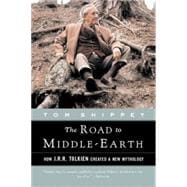
| Acknowledgements and Abbreviations | ix | ||
| Preface to the Revised and Expanded Edition | xv | ||
| 1 'Lit. and Lang.' | 1 | (27) | |
| 2 Philological Inquiries | 28 | (27) | |
| 3 The Bourgeois Burglar | 55 | (39) | |
| 4 A Cartographic Plot | 94 | (41) | |
| 5 Interlacements and the Ring | 135 | (42) | |
| 6 'When All Our Fathers Worshipped Stocks and Stones' | 177 | (46) | |
| 7 Visions and Revisions | 223 | (48) | |
| 8 'On the Cold Hill's Side' | 271 | (18) | |
| 9 'The Course of Actual Composition' | 289 | (43) | |
| Afterword | 332 | (11) | |
| Appendix A: Tolkien's Sources: The True Tradition | 343 | (10) | |
| Appendix B: Four 'Asterisk' Poems | 353 | (9) | |
| Notes | 362 | (18) | |
| Index | 380 |
The New copy of this book will include any supplemental materials advertised. Please check the title of the book to determine if it should include any access cards, study guides, lab manuals, CDs, etc.
The Used, Rental and eBook copies of this book are not guaranteed to include any supplemental materials. Typically, only the book itself is included. This is true even if the title states it includes any access cards, study guides, lab manuals, CDs, etc.